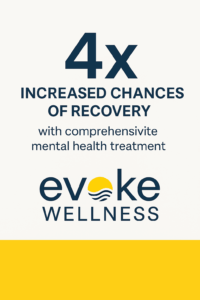When a loved one begins to experience psychosis, it can feel like your whole world tilts. The child you’ve raised, the partner you’ve trusted, the sibling you’ve known your whole life—suddenly, they’re confused, frightened, or saying things that don’t make sense. In those moments, the idea of residential treatment can sound extreme, even frightening.
But the truth is, residential treatment for psychosis is often one of the most stabilizing, humane, and hopeful forms of care available. And it’s nothing like the outdated portrayals in media or memory.
This blog walks you through what residential treatment really is, when it’s needed, what daily life looks like, and how it helps someone begin to find their way back to themselves—with safety, respect, and support every step of the way.
What Is Psychosis?
Psychosis is a symptom, not a diagnosis. It’s an umbrella term for when someone loses touch with reality. This can look like:
-
Hallucinations (seeing or hearing things that aren’t there)
-
Delusions (strong beliefs that aren’t based in reality)
-
Disorganized thinking or speech
-
Extreme paranoia or confusion
Psychosis can be a one-time episode, part of a condition like schizophrenia or bipolar disorder, or triggered by stress, trauma, or medical conditions. Regardless of the cause, psychosis often overwhelms a person’s ability to care for themselves or stay safe.
When Is Residential Treatment for Psychosis Needed?
Outpatient therapy or psychiatry can help many people manage psychosis. But residential treatment becomes important when:
-
Symptoms are escalating quickly
-
The person is not taking medication or isn’t responding to current treatment
-
Safety is a concern—either for themselves or others
-
Daily functioning has broken down (e.g., not eating, sleeping, or communicating clearly)
-
Family members are overwhelmed and unsure how to help
Residential care isn’t a punishment or a failure. It’s an act of care—a way to protect the person and their support system while stabilizing the mind and body in a safe, structured setting.
What Daily Life Looks Like in Residential Care
Forget what you’ve seen on TV. Today’s residential mental health centers are designed to feel calm, consistent, and dignified. Here’s what a typical day might look like:
Morning:
-
Gentle wake-up and medication check-in
-
Shared breakfast in a group dining area
-
Morning meeting to set a plan for the day
Midday:
-
Group therapy focusing on grounding, emotion regulation, or insight development
-
One-on-one sessions with a therapist
-
Time for reflection, journaling, or rest
Afternoon:
-
Life skills or creative activities like art, yoga, or music
-
Psychoeducation about psychosis, medication, and recovery
-
Visits or calls with loved ones (if appropriate)
Evening:
-
Dinner with peers
-
Low-stimulation activities like games, reading, or quiet conversation
-
Lights-out routines and medication support
Everything is designed to reduce stress and build trust. No decisions are rushed. The goal is stability, not speed.
Why It Feels Different Than You Expect
Many families worry that residential treatment means isolation or harsh rules. But modern programs focus on compassion, autonomy, and healing. Here’s what sets them apart:
-
Dignity-first care: Clients are treated as whole people—not just symptoms.
-
Trauma-informed staff: Most providers are trained to work with people who are scared, confused, or mistrusting.
-
Family involvement: Loved ones are kept in the loop (with consent) and supported in understanding what’s happening.
-
Medication is collaborative: Staff work with clients to explain medications, not force them.
This is about giving someone the space and tools to feel like themselves again—even if they can’t yet remember what that feels like.
Signs Someone Might Benefit from Residential Treatment
If you’re unsure whether it’s time to consider residential care, here are some signs it might be the right next step:
-
They believe things that aren’t true and can’t be redirected
-
Their behavior is unpredictable, aggressive, or dangerous
-
They’ve stopped eating, sleeping, or maintaining hygiene
-
They express intense fear, paranoia, or confusion
-
You feel physically unsafe or emotionally beyond your capacity
You don’t have to wait for things to get worse. Early treatment leads to better outcomes—and more chances for full recovery.
What Happens After Residential Treatment?
Residential treatment is often just the beginning. After stabilization, a person may step down into:
-
Partial hospitalization (PHP): Daytime care with nights at home
-
Intensive outpatient programs (IOP): Several therapy sessions a week while rebuilding everyday life
-
Ongoing therapy and psychiatric support
Recovery isn’t linear—but with the right support, people do get better. They go back to school, find meaningful work, reconnect with friends and family, and learn how to care for their mental health long-term.
FAQs About Residential Treatment for Psychosis
What’s the difference between inpatient and residential treatment?
Inpatient is typically hospital-based, short-term, and focused on crisis stabilization. Residential treatment is longer-term and happens in a home-like setting designed for recovery.
Will my loved one be forced to take medication?
Not usually. Most residential centers use a collaborative approach. Medication is encouraged but not forced unless there’s a legal order (like a psychiatric hold).
Can family visit or be involved?
Yes. Most programs offer family sessions, visiting hours, and regular updates. You’ll often be part of discharge planning and education.
How long does residential treatment last?
Length varies but often ranges from 2 to 6 weeks depending on need and insurance. The focus is on safety, stability, and preparing for next steps.
What if my loved one refuses treatment?
This can be incredibly painful. Some states allow involuntary holds in severe cases. But ideally, conversations about care happen with compassion and shared decision-making.
Myth vs. Fact
Myth: Residential treatment is only for people with “severe” mental illness.
Fact: It’s for anyone whose symptoms have become unmanageable in everyday life—whether this is their first episode or part of an ongoing condition.
Myth: People never come back from psychosis.
Fact: With early intervention and ongoing support, many people recover and live fulfilling lives.
Myth: Going to treatment means giving up freedom.
Fact: Residential care creates enough structure to restore freedom in the long run—by helping people regain control of their minds and choices.
You’re Not Alone—And You’re Not Failing
If you’re considering residential treatment for someone you love, it’s not because you’ve failed. It’s because you care deeply—and you’re reaching for help that’s grounded, kind, and proven to work.
We’re here to support you. Call us at (866) 931-6429. Our team can answer your questions, walk you through your options, and help you find the right path forward.





